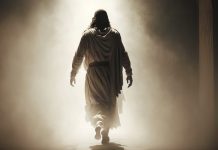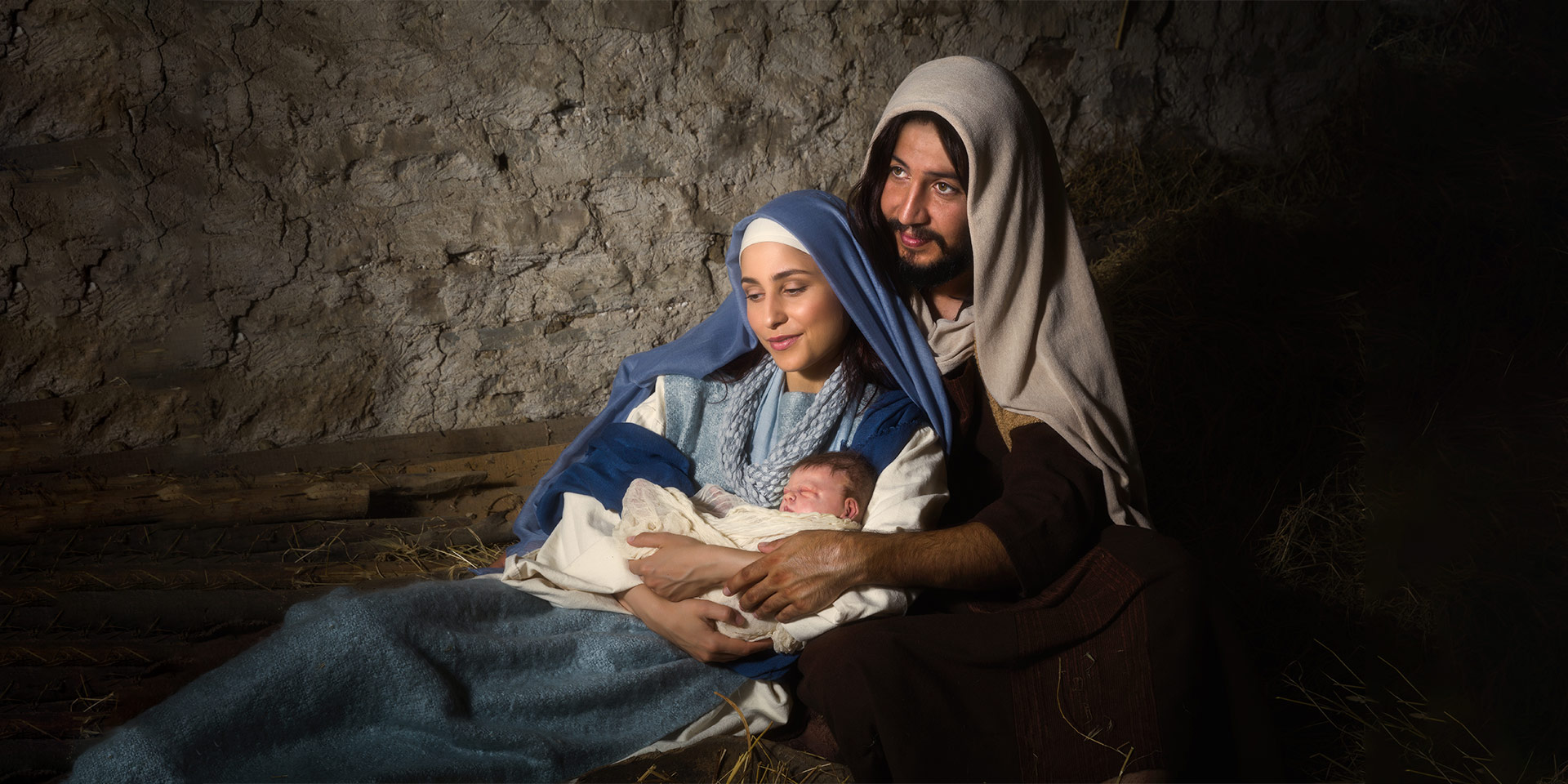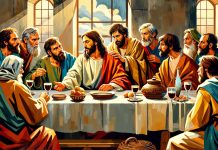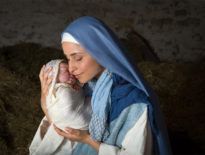He married a pregnant woman and accepted the responsibility of raising and educating a Son who was, because of His divine power, his Father. This was a mission full of risks and challenges for a humble carpenter from Nazareth, who has come to attract the attention and respect of generations.
Joseph of Nazareth was either one of the titans of the faith, or the most naïve person who ever walked the earth. These are the only possible answers to a unique situation: a man who accepts the idea that the pregnancy of his fiancée, with whom he did not have sexual relations, is the fruit of an intervention by a Being beyond the boundaries of human knowledge. However, Joseph should not be considered a superhero, feeling nothing in the face of challenges. On the contrary, he was simply a man who chose, in spite of the difficulties he encountered, to trust in God and do His will.
The turmoil of Joseph, the man, and his victories in faith were explored by the filmmakers of Joseph of Nazareth (Italy, 1999, starring Tobias Moretti). “The movie captures well the humanity of a man who had to grapple with the great mysteries of the Incarnation, the divine conception of Jesus, and the Virgin Birth”[1] says author, Carl Olson.
Two lives changed by a dream
The similarities between the life of Joseph the patriarch (presented in the book of Genesis) and the life of Joseph the carpenter are fascinating. Both made a name for themselves because of their courage and strength to live by faith in God and by trusting that their dreams were divine revelations. Joseph the patriarch, the son of Jacob, was honoured ever since his childhood by the divine revelation that showed him the path that God had prepared for his life. His family treated his dreams with indifference, considering them to be teenage fantasies. But the life of the patriarch, lived by faith in God, did not deny the dream that guided Joseph through the most difficult of circumstances. By deciphering the Pharaoh’s dreams, Joseph climbed to the highest position in the Egyptian kingdom.
Joseph of Nazareth was going through a difficult period when he learned that his fiancée was pregnant. The decision to abandon her without a word was not an act of doubt about Mary’s moral purity, but rather the result of his confusion. God spoke to him through a dream and entrusted him with one of the most difficult missions ever given to a human being: to be the protector of the mother of God’s Son and the educator of the One who would become the Teacher of people, and Redeemer of the world. His flight to and return from Egypt to protect Mary and Jesus from the wrath of Herod the Great were also coordinated by dreams of divine providence.
Away from home, Patriarch Joseph stood out in pagan Egypt as a man of absolutely remarkable morals. In the face of advances from his master’s wife, Joseph related to God by reaffirming his beliefs and asking Him to help him achieve exceptional purity of soul. For the name of his God, he observed strict abstinence.
From a different perspective and under different conditions, Joseph of Nazareth decided to remain sexually abstinent as well, as a form of respect for God and the unique and supreme mission that his wife Mary had received from God. The Bible says that Joseph “did not consummate their marriage” until she gave birth to Jesus. Despite the fact that many artists depict Joseph in their paintings as a very old man, suggesting that he could not have had a normal sex life, the truth is that his abstinence, as well as that of his namesake from Egypt, was a way to honour God.
A guardian of the mystery of godliness
As Mary’s husband, Joseph was an eyewitness and, most of the time, the only one who was directly acquainted with the events and details of the unfolding of the mystery of redemption. He was the first to hold, in his human arms, the male Child by which all the nations of the Earth were to be blessed and restored. As an adoptive father, who had been entrusted with the care of Jesus, Joseph understood how to follow the customary procedures, taking Mary’s firstborn to the Temple, with all the necessary accessories and offerings, and entering him in the civil register with the exact name that was revealed by the angel of God. The temple priest wrote down the name of Joseph as Jesus’ father, a fact confirmed by the Gospels when, later, Jesus is presented as the son of Joseph (Matthew 1:1-17; Luke 3:23).
Joseph had the role and responsibility of making the best decisions when honouring his calling as the father of the holy family. When he returned to the country after the exile in Egypt, Joseph’s intention was to settle in Bethlehem, in Judea, but when he learned that Archelaus, Herod’s son, was in control of Judea, he considered it safer for the Child to return to Nazareth of Galilee. Amongst all the colourful people that lived there, it would be easier to pass unnoticed by those who might try to kill the One considered a danger to Herod’s house.
When the time came to be confirmed as the “Son of God” (Luke 4:41-52), Jesus went with his family to the Temple of Jerusalem for the first time since His registration and circumcision as a baby. For a few moments, Joseph and Mary neglected their special mission to provide permanent care and protection to the divine Child. They lost him, and searched for him for three days. Fortunately, the Child remained in “His Father’s household.”
That moment marked the first step of Jesus’ detachment from the parental home. Raised in Nazareth, Jesus was destined for a mission whose symbols had been visible for years in the Temple of Jerusalem. Joseph’s mission as an earthly father was coming to an end. From then on, Joseph prepared to return to God what had been entrusted to him for a time. His mission as the husband of the virgin and the father of God’s Son was nearing completion. Posterity remembers Joseph with such great respect that it has reached the point of veneration. He was the man who was closest to Jesus, in His infancy and childhood days, the one who understood best, together with Mary, the love and interest of God for the restoration of human dignity and for the salvation of mankind.
Post-mortem titles, roles and honours
Christian writers have shown a continuous interest in the role of carpenter Joseph in the history of saving people from sin. This is proved, for example, by the apocryphal writings of the Proto-Gospel of James (2nd century) and Pseudo-Matthew (8th or 9th century). Around 800 AD, Christian writers and theologians mention Joseph as Nutritor Domini[2] that is, the guardian and educator of the Lord. As expected, as the interest in the virgin Mary was growing, her husband Joseph received more attention as well. Thus, it was not long before his name was written [3] onto church calendars.
The Dominican Jacob of Voragine (1229-1298) wrote a book of legends about the lives of the saints, in which he popularized the tradition that Joseph had been chosen to become Mary’s husband after a voice from heaven asked several candidates to put branches on the altar. Joseph’s branch is said to have blossomed and a dove was seen flying over it. Obviously, the legend has no support in the biblical text. Around the same time, Thomas D’Aquino [4] (1224-1274) dedicated an impressive number of pages to Joseph and assigned him an important role in the event of Jesus Christ’s incarnation. Medieval writers [5] consecrated Joseph as the spiritual patron and protector of the Church, along with the Virgin Mary. Joseph was canonized in 1642, and believers were encouraged to assign him as their protector.
The Church’s interest in Joseph’s moral virtues has been growing steadily to this day. The Vatican granted him the title of Redemptori Custos (Caretaker of the Redeemer) and, at the same time, turned him into a symbol of resistance to communism and protector[6] of the youth against moral corruption. In more recent theological works, Joseph continues to be an unlimited source of interest and inspiration. Through their writings, Pope John Paul II[7] and Marc Oullet, an important Roman Catholic cardinal in Canada, continued the millennial tradition of interest in the person, role and implications of major importance that Joseph had as the husband of Mary and as the earthly father[8] of the Son of God.
“Joseph” is one of the most popular place names in the world. Spanish settlers gave this name to several territories and cities, and his patronage is invoked by metropolises such as New York, or by countries such as China, Canada, Korea, Mexico, Austria, Belgium, Croatia, Peru and Vietnam. A number of churches of prime importance and size associate their name with this saint. The Metropolitan Cathedral of St. Joseph in Montreal is the second in size, after the Basilica of St. Peter in Rome. The series can continue with the Metropolitan Cathedral of San Jose or Porto Alegre, Brazil. Last but not least, the Roman Catholic Cathedral in Bucharest also bears his name.
Since 1955, Josephology has become one of the most popular branches of Catholic theology, with Joseph’s life and deeds being the subject of study by many Catholic institutions. The death of Joseph in the arms of Mary and Jesus is presented as an example of a happy death that any individual could aspire to. Joseph is also recommended as the patron saint of happy death.[9]
In 1955, Pope Pius XII declared the 1st of May “Joseph the Worker Feast Day”, to offer Catholic socialists, in the person of Joseph, a model of the worker and a patron of the working people. It was the culmination of a history full of repeated invocations of the name and personal qualities of Joseph, the husband of virgin Mary, and the adoptive father of Jesus of Nazareth. History does not remember his name for his carpentry work, but because of the unique role he played in the life of the Saviour of the world.



















